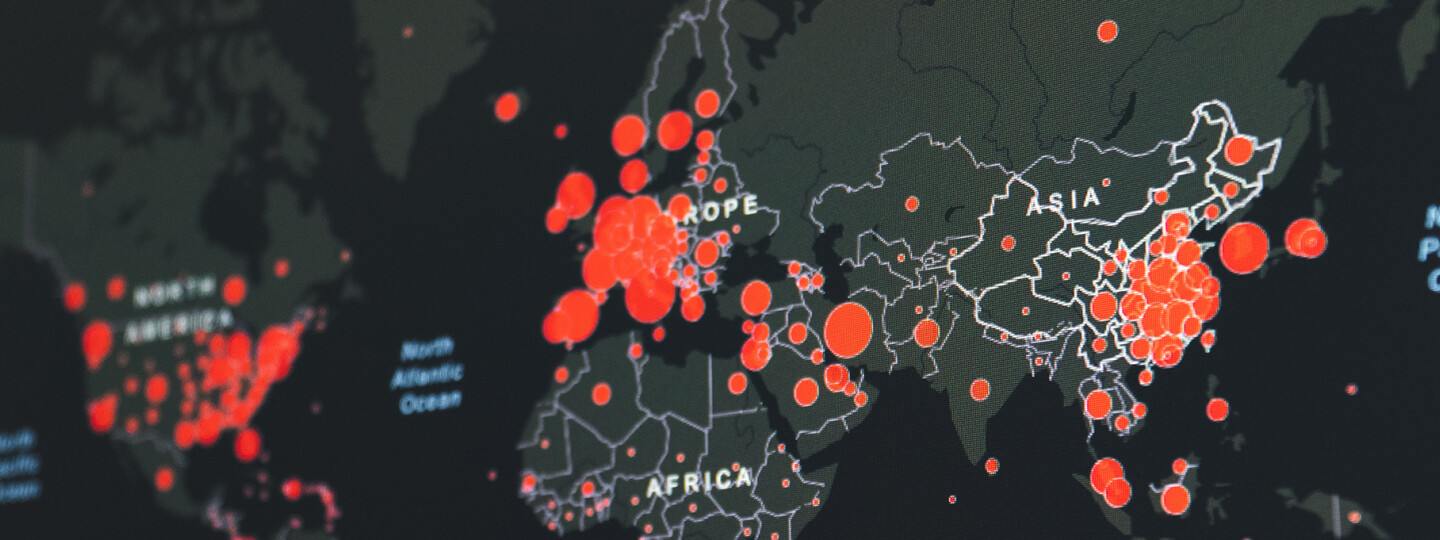The virologists at the University of Turku have followed the spread of the novel SARS-CoV-2 virus closely since the beginning of the year. Laboratories in Turku received the first genes of the new virus in February and, ever since, researchers have strived to solve the mysteries of the pathogen only the size of 120 nanometres.
The phone of Professor of Virology Ilkka Julkunen has been ringing constantly during the past few weeks. At the same time when journalists ask questions from the expert, the virology laboratory is studying the anatomy and function of the new virus. The researchers aim to understand the interaction between the virus and cells as well as how immunity to the virus builds up.
– Our goals is to produce several viral proteins and antibodies for diagnostic and research purposes. We also want to understand how the novel coronavirus circumvents the body’s immune system, explains Professor Julkunen.
In his career, Julkunen has studied several viruses that have caused a pandemic, such as different influenzas, ebola, and zika virus. Although the threats of earlier viruses have now been made concrete by the coronavirus, the virologist approaches the situation calmly.
– Despite the rapid spread and emergencies caused by the coronavirus, for a researcher, it’s just another virus among the many, says Julkunen.
Global Threats Require Input from the Entire Scientific Community
Professor Julkunen’s team has ten members and works in close collaboration with researchers at the University of Turku and other Finnish universities, Turku University Hospital, other hospital districts, and the National Institute for Health and Welfare THL. Furthermore, the pandemic will not be beaten without international collaboration. As the entire world is facing the same challenge, input is needed from the global scientific community.
– It has been great to see that researchers in both public and private institutions have made their results openly available and share information and tools altruistically. For example, reagents needed by laboratories to separate the proteins from the virus have been openly shared between different organisations, says Docent Laura Kakkola, who works in Julkunen’s team.
As SARS-CoV-2 has been known only for a couple of months, the existing research information is still rather limited even though it is increasing at an enormous rate. Although the peer-review process required of scientific information cannot follow the pace, researchers have opened their articles still under review to everyone.
– Most of the articles are open access and researchers want to make them available to the scientific community as soon as possible, Kakkola continues.
Evolutionary Pressure Guides the Virus
So far, only the proteins, genes, and RNA of the virus have been studied at the University of Turku. In the next few weeks, the researchers will have a chance to the study the entire virus as the necessary facilities are completed.
Julkunen and Kakkola are interested in how people develop resistance to the coronavirus and how long it lasts.
– At the moment, it looks like immunity builds up in 7–10 days, but we do not know how long it lasts. Depending on the virus, immunity can be rather short-term, such as in influenza, or it can last for years – or even a lifetime, says Julkunen.
It is also widely discussed whether the novel coronavirus will mutate and how fast. According to Professor Julkunen, the virus has already adapted excellently to human body and it multiplies well in the surface epithelium cells of the upper respiratory track. Therefore, it does not have evolutionary pressure to mutate right now, at the beginning of the pandemic.
– We have to remember that viruses have no will or a plan, they are directed only by the natural selection, says Julkunen.
Currently, his team is working on their first article together with THL. The goal is that the results and research data can be used in developing diagnostic tests, for example, to detect antibodies and viral proteins with rapid tests.
Gene Amplification Method Most exact Way to Detect Coronavirus Infection
A coronavirus test detects the virus from respiratory discharge. The sample is collected from nasopharynx with a soft-tipped stick.
– At the moment, the most reliable test is the polymerase chain reaction (PCR) method where the genotype of the virus is amplified from the sample, explains Senior Physician at Turku University Hospital and Docent of Virology Tytti Vuorinen.
The PCR gene amplification method is also applied in the diagnostics of other viral infections. It is used, for example, in verifying viruses that cause respiratory infections and hepatitis as well as herpes viruses in immunodeficient patients.
– The gene amplification methods are the most sensitive ways to verify viral infections and even a very small amount of virus in the sample can be detected. Furthermore, the method is fast.
The preparation of the coronavirus samples is conducted in a separate laboratory facility and the staff wear protective gear. The sample is handled and inactivated in microbiological safety cabinets so that it is no longer infectious and therefore safe for further investigation. The genotype of the virus is isolated with automatic equipment and analysed with gene amplification tools.
At the moment, Turku University Hospital is testing coronavirus samples from Southwest Finland and two other regions. In Finland, virus test analyses are conducted also in central hospitals and at the Finnish Institute for Health and Welfare (THL) in addition to the university hospitals.
The coronavirus situation has also increased the number of inquiries about home tests and rapid testing. Vuorinen says that methods that detect proteins from the surface of the virus are under development. However, these methods are not as sensitive as the gene amplification methods. In addition, tests for antibodies are also under way.
– In an infection, antibodies appear slowly and therefore this method is not feasible when the infection has to be detected quickly. Instead, it can be used to find out whether the patient has already had the disease.
